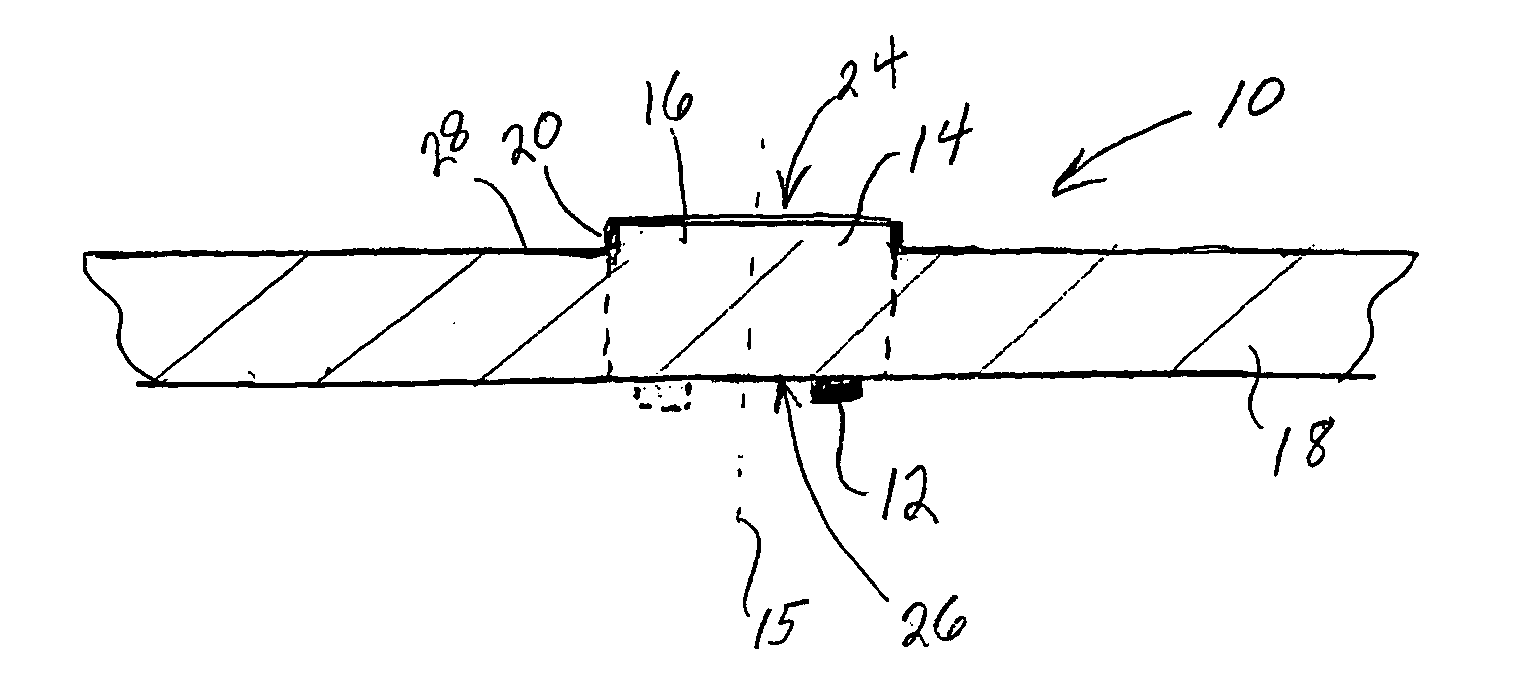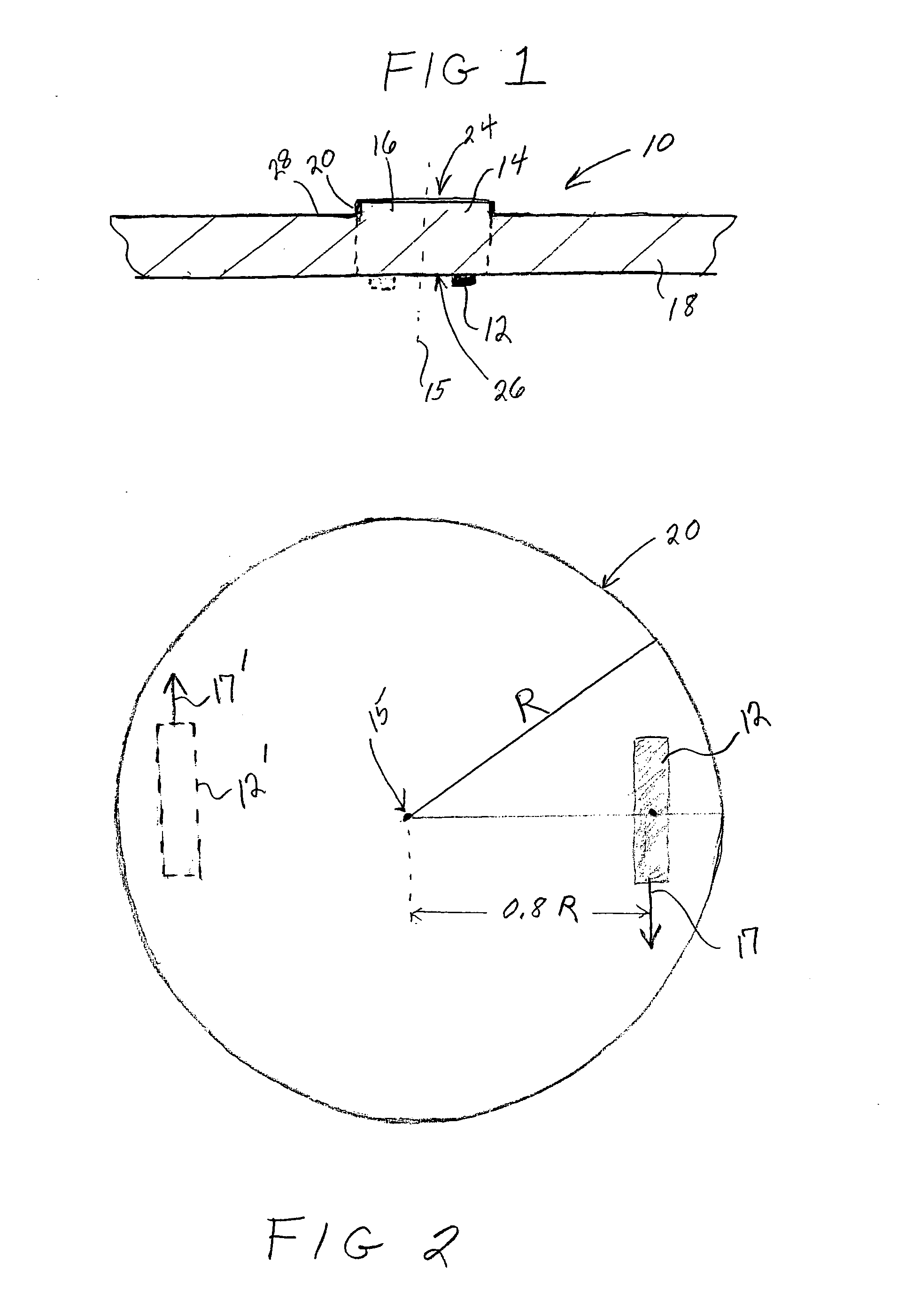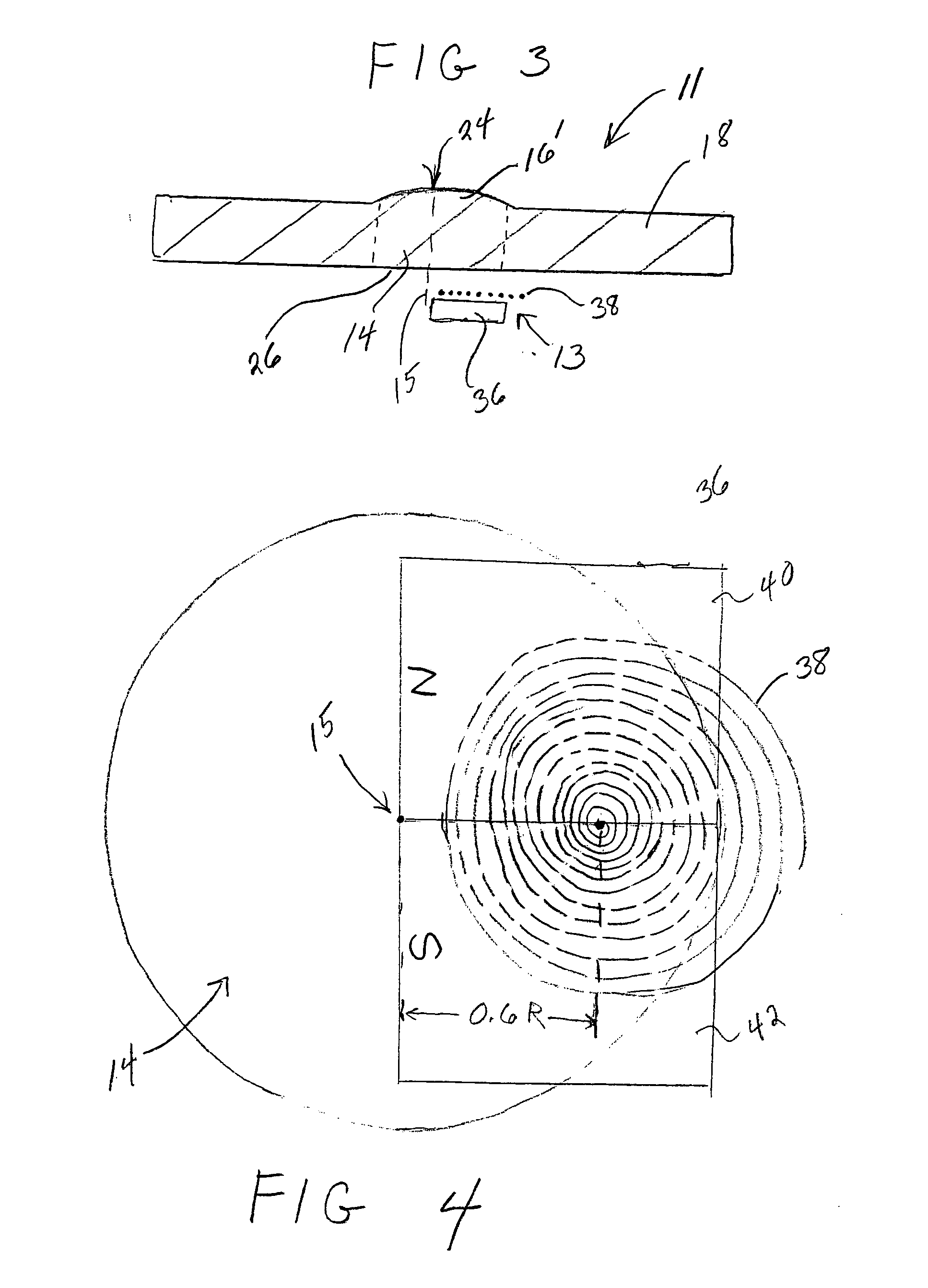Torsional acoustic wave sensor
a torsional acoustic wave and sensor technology, applied in the field of torsional acoustic wave sensors, can solve the problems of metals and the like not being used, the piezoelectric element is relatively unprotected, and the type of switch is expensiv
- Summary
- Abstract
- Description
- Claims
- Application Information
AI Technical Summary
Benefits of technology
Problems solved by technology
Method used
Image
Examples
Embodiment Construction
An acoustic wave sensor or resonator 10, 11, in accordance with the present invention as shown in FIGS. 1-4, includes a transducer 12, 13 positioned adjacent an acoustic wave cavity 14 such that the transducer 12, 13 is off-center with respect to the centerline 15 of the cavity 14 so as to generate a trapped or resonant torsional acoustic wave in the acoustic wave cavity 14. The acoustic wave cavity 14 is formed in a noncylindrical substrate 18 wherein the transducer 12, 13 generating the trapped torsional acoustic wave is in a plane that is parallel to a planar surface 26 of the acoustic wave cavity 14. It has been found that a trapped, torsional acoustic wave generated in accordance with the present invention is insensitive to water. That is, an acoustic wave touch sensor, for example, utilizing a trapped torsional wave generated in accordance with the present invention will not erroneously register a sensed event when only water is present where the water is at a level that is a...
PUM
 Login to View More
Login to View More Abstract
Description
Claims
Application Information
 Login to View More
Login to View More - R&D
- Intellectual Property
- Life Sciences
- Materials
- Tech Scout
- Unparalleled Data Quality
- Higher Quality Content
- 60% Fewer Hallucinations
Browse by: Latest US Patents, China's latest patents, Technical Efficacy Thesaurus, Application Domain, Technology Topic, Popular Technical Reports.
© 2025 PatSnap. All rights reserved.Legal|Privacy policy|Modern Slavery Act Transparency Statement|Sitemap|About US| Contact US: help@patsnap.com



